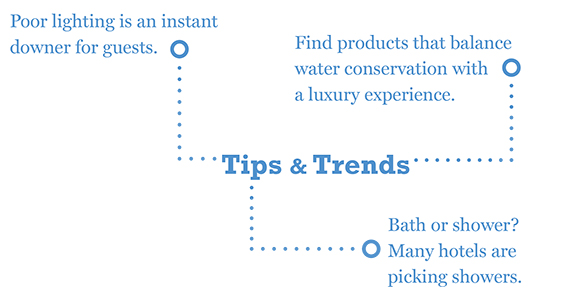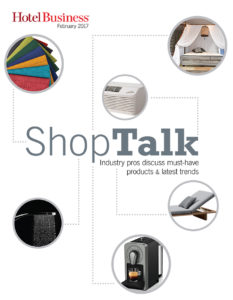Bath design is increasingly becoming integral to the guest experience, as baths have become a point of luxury in the guestroom and suite, with fancy features, enhanced lighting and the inclusion of statement pieces such as vanities becoming more popular.
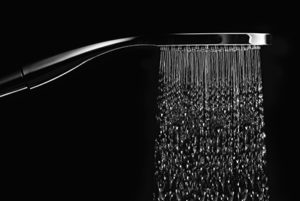
California Faucets’ StyleFlow Air showerheads feature a patented device that infuses water with air to create fuller droplets without increasing water consumption, according to the company.
“As it relates to wellness and grooming, the bathroom overall has become a higher priority on people’s lists, and we’re responding to that,” said Teddy Mayer, VP of design at Virgin Hotels. “With that increase in size, it comes with added amenities.”
He noted that these additions were important to travelers. “We have well-lit makeup tables—they’re a landing place for room service to drop off a tray, or for couples to get ready together. It does a lot of different things and really ends up being thoughtful and functional,” he said. Mayer attributes this rise to guests looking for amenities that they have at home.
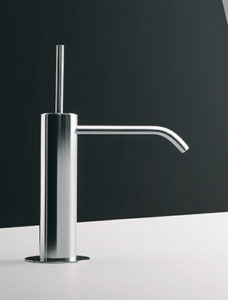
Fantini’s Colibrì, from designers Silvana Angeletti and Daniele Ruzza, recalls bamboo taps in Japanese gardens. It is designed for water conservation and sustainability.
“There’s lots of thought given to how people use the bathroom in hotel environments now,” said Stacy Elliston, principal, Studio 11 Design, “such as how much ‘stuff’ they bring with them, and creating enough space for it to be used efficiently.”
“This brings me to a really important point: It’s all about providing these extra details and thoughtful amenities that make our guests feel like they’re getting a lot for their money,” Mayer said. “You walk in and go, ‘Wow. Did I get an upgrade, or am I getting all this for the price?’ We like to drive a lot of value to our consumers.”
Baths are still light and bright. Mayer noted Virgin Hotels prefers to keep their rooms in light finishes and well lit, projecting a clean bathroom. Elliston echoed this: “Lighting continues to be a very high priority—ensuring there is enough and the warmth of the output are continually taken into account,” she observed.
“It’s just about being super functional and going that little bit of an extra mile that feels much more gracious and like something you’d have at home,” Mayer added.
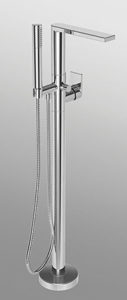
The Skylar Freestanding Tub Filler from Newport Brass, part of the Skylar collection, features an integrated diverter and hand shower with a flexible metal hose. It comes in polished nickel, satin nickel and polished chrome finishes.
Doug Roby, CEO and president of Commercial Interior Decor Inc., said, “While this isn’t a new item, black makeup remover towels are still trending this year and making appearances at hotels.” In addition, he noted that the use of technology has made its way to baths. “There is now touchless equipment in the public bathrooms at hotels.”
In the bath experience, it’s actually becoming more standard to walk into a hotel room and not see a bath at all. “They’re very few and far between,” Mayer said. “In their place, you have a really great shower, particularly in the boutique/lifestyle space. Hotels are moving away from the tub with a shower above it to the standard, glass-enclosed showers with no curtains.”
Hotel bathrooms are constantly looking toward the next innovations. “We’re working with one of the major plumbing companies on some innovations in the shower area,” Mayer said. “We always have a rain-head shower for a wonderful experience. We’re just continually improving upon that experience. Particularly when water conservation is so important, how do you still achieve a great shower experience?”
If there’s one trend that has enveloped all areas of the hospitality industry, it’s sustainability, and this trickles down to baths, as well—with no signs of slowing down. “Richard Branson is a strong supporter of the planet and in doing what’s right for the planet, and Virgin Hotels is no different; we’re following his lead on that,” Mayer said. “All of our properties are required to at least be LEED Silver certified for sustainability, and we go above and beyond that to make them as energy-sefficient and water-conscious as possible. The codes are getting tighter and stricter on energy and water consumption. So it’s about creating unique opportunities to think about things a little bit differently. It’s not a major shift, but it’ll become much more commonplace.”

